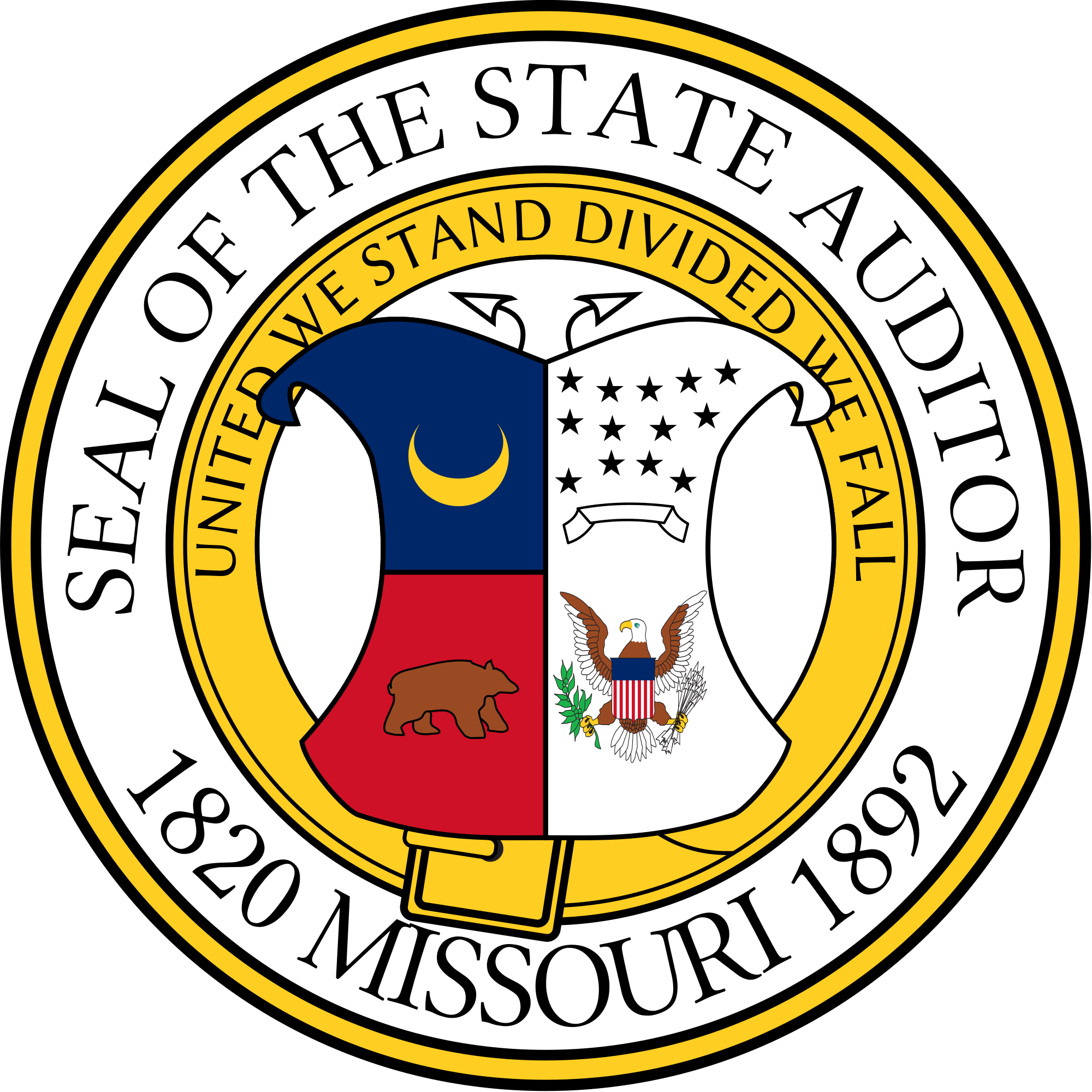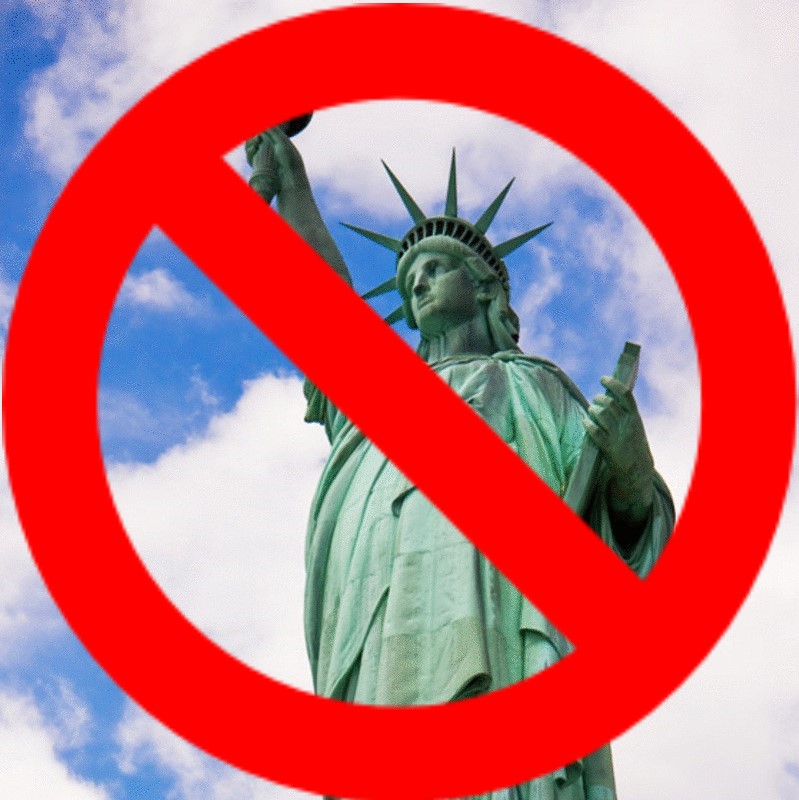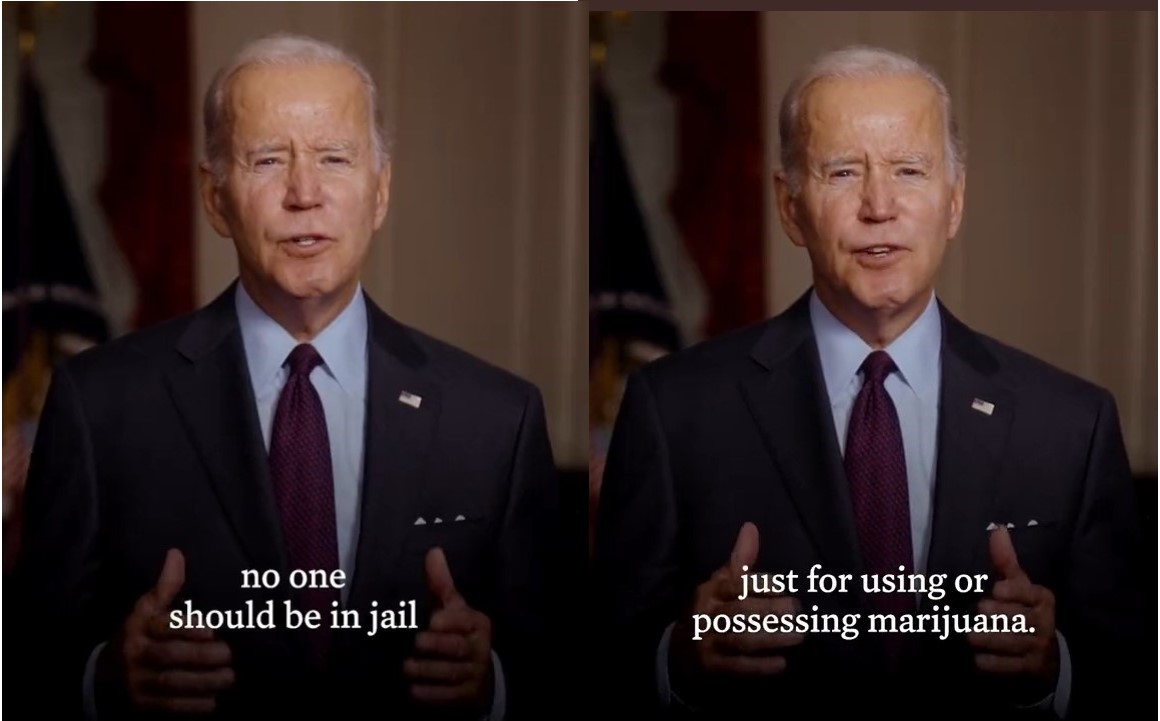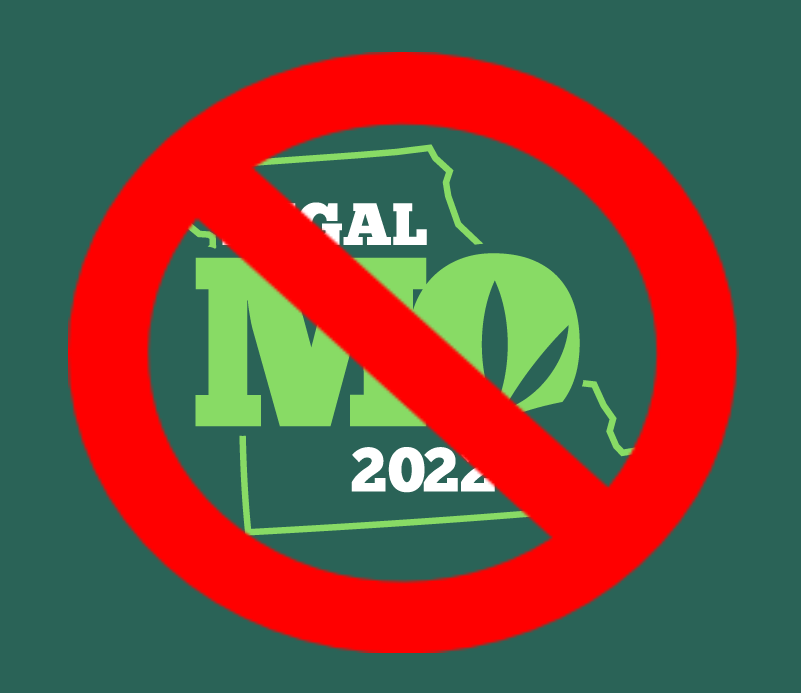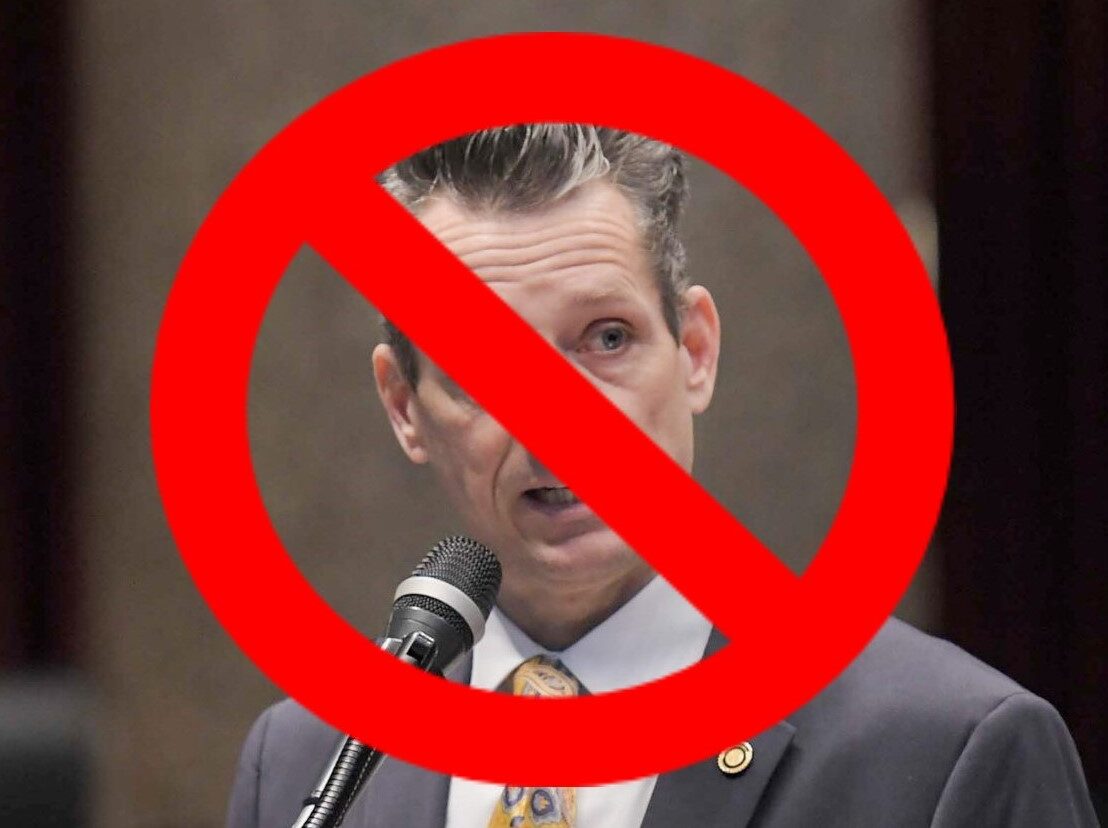What does Amendment No. 2 actually say??
This article was originally published on October 31, 2018 in the Medical Cannabis Journal.
For those who still find nothing troubling regarding Missouri’s medical “marijuana” initiative, Amendment No. 2, here are a few reasons for contemplation, taken from my recent critique, 2018-051 New Approach’s Medical Cannabis Offering, Amendment No. 2. Please reference this critique for more in-depth analysis.
I have heard a number of Missourians with the mantra, “Amendment 2 is least harmful. If you don’t vote for it, the others will surely pass.” Like all things can be justified on a sliding scale. I’ve never really understood why people would be so prone to settle for far less than what they need – or jeopardize future attempts at liberty by installing corrupt, divisive criteria in a state’s constitution. I guess what frustrates me most is that there are so VERY FEW who have actually read ANY of the current initiatives or understand what the ramifications would be – if any of them were to actually pass.
My hope is to make you think before you act…before you vote.
Please download Amendment 2 from the Missouri’s Secretary of State’s Office. Read it for yourself. As you do, realize…in all the effort and money that has been devoted to putting this initiative on the ballot, it would have taken no more energy…no more expense to support and finance a REAL legalization initiative and actually appreciate the real dreams of Missouri’s cannabis patients.
* * * * * * *
So what are “key issues” with this initiative?
– Cannabis remains a Schedule I drug by Missouri law
– Writes to Missouri’s Constitution
– provides no protection for patients regarding DUI or consumption anywhere but in an owned
residence
– Industry Building – at the expense of Missouri’s chronically and terminally ill
– Places complete control in the hands of Missouri’s Department of Health and Senior Services
– Confusing hemp definition
– Sharing patient information with the Feds
– Patients limited to cultivating 6 plants PER YEAR
– Imposes Monthly Purchasing Limits
– Imposes Patient “possession” limits”
– “Sin Tax” (4%)
– Patients are forbidden from driving a car
– No access for the chronically or terminally ill who are incarcerated
– No protection for the patient in the workplace
– Prohibits home production of Cannabis oil– No where to “legally” consume
– Cannabis remains a Schedule I drug by Missouri law
Amendment No. 2 makes no effort to effect or remove Cannabis from being a Schedule I drug. Though EVERY state has the authority to maintain their own Controlled Substance List and stipulate its contents in whatever manner they wish, including removing substances that obviously do not fit their criteria.
It is a fact that Cannabis is non-toxic. Cannabis has been food and medicine for the human race for over 30,000 years. Despite this being widely known for well over a decade, state policy has not reflected this truth. Instead, draconian policy, like this initiative, seeks to embed prohibitionist ideals in Missouri’s Constitution.
– Writes to Missouri’s Constitution
When prudent, it is only right that we amend the Constitutions of this land to further guarantee the freedoms we all seek to appreciate, and otherwise expect as citizens of this country. In the hands of a Freedom Fighter, that could be a wonderful thing, but in the hands of an opportunist, a profiteer without regard for anyone else, well, that could be quite terrible for us all. It is our duty to guard our laws, knowing fully that which was designed to harbor our freedom, once corrupted, could damn – not only us, but generations to come.
– provides no protection for patients regarding DUI or any consumption apart from an owned residence.
“Driving under the influence”? Where is the writers definition of that? And where is the definition of “under the influence”? Without a definition, all who read this initiative, but most importantly, law enforcement, will have the opportunity to interpret this line however it benefits them most. Currently, across the nation, in “legal” as well as “nonlegal” states, law enforcement considers ALL Cannabis as “contraband”. This is not an impression, but fact. Its a Schedule I drug. Without clear and concise rules, law enforcement and the courts will resort to their OLD playbook.
If you “use” Cannabis at all, you’re “under the influence”. It remains in our bodies for days, sometimes weeks. So, by this initiative, ALL Cannabis users fall under the cross-hairs of PD if they attempt to drive. This has nothing to do with euphoria, but EVERYTHING to do with the very reason we have medical Cannabis legislation. We must PROTECT patients from the bigotries that taint Cannabis therapies.
Cannabis benefits the body. So where is the “influence”? Should we consider shrinking tumors and lack of seizures as proof of being “under the influence”?
– Industry Building at the expense of Missouri’s chronically and terminally ill
The following is the heart of what this initiative is really all about. The “nuts and bolts” of setting up a recreational dispensary industry:
Did I say “recreational”? Why, yes…yes I did. (Remember, this is about making money)
Wouldn’t we all agree that the purpose of a “medical Cannabis Initiative” is to benefit those who legitimately seek this treatment?? This initiative creates a deliberately limited, highly regulated industry – a “Dispensary Industry”, that preys on Missouri’s chronically and terminally ill.
Medical Marijuana Cultivation Facility
($10,000 application + $25,000 – first year, $5,000 + $25,000 – there after for each X 3)
Kind of confusing, isn’t it? Basically, anyone who wants to start a Cultivation Facility will be limited to only three facilities, will pay $35,000 the first year and will pay $30,000+ per year there after for each facility.
Medical Marijuana Dispensary Facility
($6,000 + $10,000 – first year, $3,000 + $10,000 – there after for each X 5)
Basically, anyone who wants to start a Dispensary Facility will be limited to only five facilities, will pay $16,000 the first year. and will pay $13,000+ per year there after for each facility.
Medical Marijuana-Infused Products Manufacturing Facility
($6,000 + $10,000 – first year, $3,000 + $10,000 there after for each X 3)
Anyone who wants to start an Infused Products Facility will be limited to only three facilities and will pay $16,000 the first year. Then $13,000+ per year there after for each facility.
If Missouri’s citizens could benefit from Cannabis medicinally, why would the writer of this initiative seek to “limit it’s legal production, distribution, sale and purchase” – to the point of stipulating such limits in the state constitution? Is this a method of industry building that guarantees a middleman? Further, how can the writer state that the purpose of this initiative is to ensure that someone with terminal illness (cancer, etc.) would have safe, legal access, but then deny them the right to access it anywhere but their home (and, if they rent, perhaps not even there*)?
*As I have shared in other critiques, here in Colorado, Cannabis is just beyond the reach of 90% of those who really need it – because of overly restrictive regulations that covet questionable business practices, and ignores exorbitant pricing. All while invoking policy that penalizes patients and neglects their actual needs.
Most lease agreements are designed around a Federal model, which, despite Colorado law, sees Cannabis as a “harmful dangerous illegal drug” and forbids its use on or within its premises. Most forbid cultivation, while many will not tolerate edibles or even the presence of any form of Cannabis.
– Places complete control in the hands of Missouri’s Department of Health and Senior Services
In my efforts from years ago, I brought this specific “department” to public attention because it is the department that oversees Missouri’s “Controlled Substance List”. My goal was, and still is to remove Cannabis entirely from the list of Controlled Substances. Every state has that right.
If this writer would have done as I had directed, this line and, actually, most of this document would not be necessary. Once Cannabis is removed from its state’s Controlled Substance List, it is no longer a “controlled substance” – no longer a “drug”.
This section should really be called “Rules for building a “Cannabis Industry“
(c) Instructions or guidance for local authorities and law enforcement officers:
(d) Requirements for inspections, investigations, searches, seizures, and such additional enforcement activities as may become necessary from time to time;
(e) Creation of a range of administrative penalties for use by the Department;
So, in a nut shell, this document gives full authority to Health and Senior Services and the “Department” to draft whatever rules they see fit and to basic design Missouri’s Cannabis program / industry however they choose. I for one become nervous hearing that “searches” and “seizures” and “additional enforcement activities” are being written into a state Constitution.
– Confusing hemp definition
(5) “Marijuana” or “Marihuana” means Cannabis indica, Cannabis sativa, and Cannabis ruderalis, hybrids of such species, and any other strains commonly understood within the scientific community to constitute marijuana, as well as resin extracted from the plant and marijuana-infused products. “Marijuana” or “Marihuana” do not include industrial hemp containing a crop-wide average tetrahydrocannabinol concentration that does not exceed three-tenths of one percent on a dry weight basis, or commodities or products manufactured from industrial hemp.
Cannabis Indica, Cannabis Sativa and Cannabis Ruderalis and all forms in between are, Cannabis. “Industrial hemp” is a method of use, not a strain and ACTUALLY regards versions of “sativa”, reserved for industrial purposes. This is how the language is twisted. How can you NOT include “industrial hemp” in the marijuana/Cannabis definition? There is NO scientific basis for renaming a Cannabis solely based on its THC content. Industrial hemp is not characteristically devoid of THC.
ALL Cannabinoids, most particularly THC, are produced because of their strategically important purpose to the plant. Historically, industrial hemp strains are positive for THC, at different levels. But with this initiative, the author will install in Missouri’s Constitution a limit that will hugely cripple a future hemp industry for this state. All because of a preoccupation with THC.
– Sharing patient information with the Feds
“Any information released related to patients may be used only for a purpose authorized by federal law and this section, including verifying that a person who presented a patient identification card to a state or local law enforcement official is lawfully in possession of such card.”
For what purpose would the “Department” feel it is “authorized by Federal law” to compromise confidential personal medical records?
– Patients limited to cultivating 6 plants per year
* Patient Cultivation – Qualifying Patient or Primary caregiver, ($100 + = 6 flowering plants)
With the purchase of an “identification card”, a patient can cultivate up to a maximum of six plants – in “flower”. There is no listing for plants that are seedlings or in vegetative state. These amounts will apparently have to be haggled out in the state house. My guess, after much nonsense, the “Department” will designate a maximum of six plants will be permitted in “vegetative” state, to reflect the six already permitted in “flower”, but for now, all that Missouri patients would have under this initiative would be what it states. Six plants – TOTAL per year – is what it states. Anyone who goes over may very well face past/present law regarding such an infraction. So those promised that once they “had a card”, would be legal, were seriously under-informed.
Let’s do some more math. Considering that an average indica hybrid Cannabis plant, in a home garden, should glean 6 to 8 ounces per plant:
8 X 6 = 48 ounces. This is what the writer would deem to be a year’s supply.
This, obviously, forces the patient to have to patronize the dispensary industry to make up for this “mandated” shortfall in their home grow.
– Purchasing Limits
(13) The Department may set a limit on the amount of marijuana that may be purchased by or on behalf of a single Qualifying Patient in a thirty day period, provided that limit is not less than four ounces of dried, unprocessed marijuana, or its equivalent. Any such limit shall not apply to a Qualifying Patient with written certification from two independent physicians that there are compelling reasons why the Qualifying Patient needs a greater amount than the limit established by the Department.
30 day “purchased” supply = 4 ounces Cannabis plant material – unprocessed
– or –
2 independent physicians with “compelling reasons” that the patient needs more
– Patient “possession” limits”
(14) The Department may set a limit on the amount of marijuana that may be possessed by or on behalf of each qualifying patient, provided that limit is not less than a sixty day supply of dried, unprocessed marijuana, or its equivalent. A Primary caregiver may possess a separate legal limit for each Qualifying Patient under their care and a separate legal limit for themselves if they are a Qualifying Patient.
Qualifying Patients cultivating marijuana for medical use may possess up to a ninety day supply, as long as the supply remains on property
under their control. Any such limit shall not apply to a Qualifying Patient with written certification from two independent physicians that there are compelling reasons for additional amounts.
What is a “sixty day (minimum) or “ninety day” (maximum) supply of dried, unprocessed marijuana”? If this number is not stipulated here, it will have to be determined by the “Department”, whom this writer gives FULL control. Since this relates to “unprocessed marijuana”, those suffering from terminal illness are obviously left out. We’re hard-pressed to guess what these amounts could be.
I have spoken to many across this country who attempted to control their chronic illness with “smoked” Cannabis. For many “non-cancer ailments, this is possible. The amount I most often heard was one half to one ounce of Cannabis flower per week, so let’s try to look at this mathematically.
I weighed a “pre-roll” (commercially purchased Cannabis “joint”). It came out close to 1.5 grams. Let’s figure five joints per day.
(“not less than”) 60 day supply: 1.5 X 5 = 7.5gr per day. 7.5 X 60 = 450gr, or 16.07 ounces, or 1 pound
(“up to”) 90 day supply: 1.5 X 5 = 7.5gr per day. 7.5 X 90 = 675gr, or 24.11 ounces, or 1.5 pounds
Sounds like a lot if you’re a recreational user, but of course, if you were a patient, particularly someone battling terminal illness, you’re not even in the ball park. Patients battling serious chronic and/or terminal illness normally treat their conditions with “concentrates”, not raw flower. These patients consume anywhere from 100 (MS, MD, epilepsy, etc) to 1000 (cancer) milligrams of FECO (full extract Cannabis oil) or “hash oil” per day.
1,000mg (daily) X 60 = 60,000mg, or 60 grams, or 60 day supply
On a really good day, a patient or caregiver oil maker can produce 60 grams of FECO from a pound of very rich Cannabis flower. Most patients could not afford flower for making oil so they would use “trim” (waste material), which would take upwards of three times as much plant material.
If it were possible to purchase the amount of “flower” to produce 60 grams here in Colorado (it isn’t – legally), it would cost roughly $200 per ounce (medical) raw “flower”,
$200 X 16 = $3,200, or 60 day supply ($1,600 per month)
Most patients can’t sustain this much money going out every month, at least not for long. Believe me, it’s heartbreaking watching as cancer patients near remission – feeling good, tumors shrinking, only to have to stop or reduce their Cannabis oil dosing when their money runs out. So many have perished here in Colorado or gone home to die. How much worse it will be in states like Missouri where patients can only hope for something far less than what we have in these more progressive states.
Possession of between the legal limit and up to twice the legal limit shall subject the possessor to Department sanctions, including an administrative penalty and loss of their patient identification card for up to a year. Purposefully possessing amounts in excess of twice the legal limit shall be punishable by imprisonment of up to one year and a fine of up to two thousand dollars.
Well, this pretty well dashes the hopes of the enterprising patient who in hopes of growing tall, two to three pound sativa plants… so as to actually have enough medicine to span the year without paying dispensary prices. Don’t fool yourself. The imprisonment side of this is VERY real.
– “Sin Tax” (4%)
4. Taxation and Reporting
(1) A tax is levied upon the retail sale of marijuana for medical use sold at Medical Marijuana Dispensary Facilities within the state. The tax shall be at a rate of four percent of the retail price. The tax shall be collected by each licensed Medical Marijuana Dispensary Facility and paid to the Department of Revenue. After retaining no more than five percent for its actual collection costs, amounts generated by the tax levied in this section shall be deposited by the Department of Revenue into the Missouri Veterans’ Health and Care Fund. Licensed entities making retail sales within the state shall be allowed approved credit for returns provided the tax was paid on the returned item and the purchaser was given the refund or credit.
Everyone wants to help Veterans…or they should. The thought that “Medical Marijuana Dispensaries” would be forced to help our Veterans sounds like a great idea – if, dispensaries were retail facilities raking in major profits – which, in fact, they are – on both counts. But wait a second. The dispensaries aren’t paying this “excise tax”. Patients are.
What IS an “excise tax”, anyway? They are taxes imposed above and beyond sales tax. “Excise taxes” are classically called “sin taxes” because they are imposed on products to artificially inflate their price…to discourage people from buying them. Morally, that would seem correct, if the products were harmful…like cigarettes and alcohol. Since they are harmful to the body, to use them would be a “sin”.
So, in the language of this initiative, for you to ease the symptoms of your chronic or terminal illness, using Cannabis would be inherently sinful, justifying a penalty on you…but the “Department” is going to justify imposing this penalty for your “sin” by providing help for our Veterans, (those for whom our financially bloated military has refused to provide).
Who is this writer trying to impress – at the expense of our chronically and terminally ill?
– Patients are forbidden from driving a car
(10) Nothing in this section shall provide immunity for negligence, either common law or statutorily created, nor criminal immunities for operating a vehicle, aircraft, dangerous device, or navigating a boat under the influence of marijuana.
What they are saying is, “Feel free to consume alcohol or prescription drugs recreationally, but in no way shall you treat your chronic or terminal illness if you intend to EVER use a motorized vehicle.”
This is a HUGE issue that has not truly sunk in among our nation’s cannabis consumers. Perhaps more than any other reason, this is why Cannabis CANNOT any longer be falsely compared to alcohol. Alcohol is an “intoxicant”…a poison. Cannabis is NOT toxic. It is FOOD. Consequently, Cannabis effects the body through nutrition, not trauma.
Alcohol intoxication takes place when the liver is overwhelmed and cannot sufficiently convert the alcohol in one’s system without it, at least in part, spilling over into the bloodstream and making it’s way to other parts of the body, particularly the brain. There, it’s toxic effect begins to kill brain cells, brain tissue swells and dehydrates. This results in a numbing effect that impairs judgement.
When Cannabis is consumed, it easily passes through the digestive system – it’s non-toxic, so the liver sees it as such. As it makes its way through the body, it provides nourishment and healing, replicating the work of endogenous Cannabinoids like Anandamide. The euphoria is experienced when the Cannabinoid THC reaches the cb1 receptors in the brain – not a toxic reaction at all.
Most who consume Cannabis regularly report a HEIGHTENED awareness – NOT an impairment. Wouldn’t it be something if police stops occurred for actual infractions of the law?
(c) Operate, navigate, or be in actual physical control of any dangerous device or motor vehicle, aircraft or motorboat while under the influence of marijuana: or
Under this initiative, if you are a medical Cannabis patient, you must give up the right to use a motorized vehicle of ANY kind.
– No access for the chronically or terminally ill who are incarcerated
7. Additional Provisions
(1) Nothing in this section permits a person to:
(a) Consume marijuana for medical use in a jail or correctional facility;
I guess we’re fortunate that we’re not talking about insulin. But wait, what about cancer treatment? One of the illnesses listed in this initiative IS cancer. Is the writer deliberately penalizing the terminally ill (to the point of death) for being in jail or prison? Seems that way, doesn’t it?
– No protection for the patient in the workplace
(b) Undertake any task under the influence of marijuana when doing so would constitute negligence or professional malpractice; or
We don’t have a definition for “under the influence of marijuana, but apparently doing so in some cases could constitute “negligence or professional malpractice”… according to the writer of this initiative. Again, that’s a non-toxic, highly therapeutic plant that shrinks cancerous tumors.
(d) Bring a claim against any employer, former employer, or prospective employer for wrongful discharge, discrimination, or any similar cause of action or remedy, based on the employer, former employer, or prospective employer prohibiting the employee, former employee, or prospective employee from being under the influence of marijuana while at work or disciplining the employee or former employee, up to and including termination from employment, for working or attempting to work while under the influence of marijuana.
Again, by reason of the very way that Cannabis functions within the body of a medical Cannabis patient, the writers of this initiative have denied the rights of any employee to sue for discrimination…if the employer states that the discharge was for using Cannabis. Yeah…it’s exactly as it sounds…
Prohibits home production of Cannabis oil
Concentrate production
(8) No person shall extract resins from marijuana using dangerous materials or combustible gases without a Medical Marijuana-Infused Products Manufacturing Facility license.Violation of this prohibition shall subject the violator to Department sanctions, including an administrative penalty and, if applicable, loss of their identification card, certificate, or license for up to one year.
In other words, if your condition requires Cannabis concentrates, which is the case for virtually everyone who suffers from chronic or terminal illness, you are forbidden to produce the concentrates yourself. You MUST purchase your life-preserving Cannabis oil from a dispensary.
Missouri’s terminally ill aren’t even considered if they hope to produce their own oil, even though “cancer” is considered a “Qualifying Medical Condition”. Of course, they could purchase their oil from a dispensary. The closest thing that I have been able to locate currently in dispensaries across the country is a product called “distillate”. It goes for roughly $45 (medical, $65 retail) per gram here in Colorado. In Illinois and Florida it goes for $90 per gram. That figure would be more what Missouri patients can expect under this initiative. If you live in Missouri and have cancer, I hope you have deep pockets:
$90 X 60 = $5,400 for a 60 day cancer regiment
And this is only two months!
Patients will often reduce to a maintenance regiment after one to two regiments at a full gram per day. But there’s really very little way around a cancer patient NOT spending a minimum of $10,000 in the first six months when forced to pay dispensary prices. Seems like patients, the ones for whom this initiative was designed, are damned if they do and damned if they don’t. But in reality, this was never about patients, was it?
This is about creating an “industry”… making money.
– No where to “legally” consume
(7) No Qualifying Patient shall consume marijuana for medical use in a public place, unless provided by law. Violation of this prohibition shall subject the violator to sanctions as provided by general law.
With no definition for a “public place”, this leaves the definition up to the discretion of coworkers, security guards, street merchants, law enforcement and in general, abnormally inquisitive people passing by – and then, ultimately, the courts. This is the sort of thing that transforms a Sunday afternoon with the family into a horrendous situation that might include an altercation with law enforcement, jail time, court and legal fees, civil forfeiture, loss of work…. Understand, there is no place that is “legal” to consume cannabis outside the home by the rules of this initiative.
* * * * * * * *
My summary:
This is one very confusing and convoluted document. There is no doubt to it’s real purpose. It’s goal is to establish a “Cannabis industry”, at the expense (and hardship) of those who require Cannabis to treat their chronic and/or terminal illness. Further, it seeks to impose it’s version of prohibition through a Constitutional Amendment. To, SOME DAY – correct the many problems this initiative creates would require at least one more Constitutional Amendment – and all the work and expense to make it happen – again.
Since the beginning of time, there have been those who sought to create for themselves a “middleman” position where those who produce AND those who purchase are required to pay a surcharge. The result has always been detrimental for the consumer – and morally corrupt when no real benefit is provided to those who flip the bill.
This is supposed to be a “medical Cannabis initiative”. By it’s title, one would assume that the program it would create would first and foremost, benefit the health and well-being of those for whom it was designed – not to profit special interest and out of state investors, and certainly not just as a novel way to generate income for pet projects.
Do you remember where the revenue comes from? Do you recall, after all so many words? The writers seem to think the chronically and terminally ill somehow have experienced a financial windfall, along with their debilitating illness. How could one be so removed from reality that they would think one besieged by illness could somehow afford inflated prices for recreational amounts to treat their life-threatening disease?
To commit an injustice on a fellow citizens could possibly be understood, if one is truly ignorant of the ramifications of one’s actions, but that is not the case here. The seemingly plagiaristic nature of this document attests to at least SOME research, which would have AT LEAST exposed them to a measure of the truth. This is SUPPOSED to be a “medical Cannabis” initiative. How could anyone assume that the writer(s) would NOT, at least to some minuscule amount understand the therapeutic uses and benefits of Cannabis.
I cannot in good conscience endorse this initiative or the other two shameful and divisive excuses for policy. If that offends you, may I remind you that I have written REAL legalization initiatives for Missouri – repeatedly, four in fact, – since 2012? Where are you, Missouri?
I am attempting to write five REAL legalization initiatives for five states for 2020 (Missouri – completed, Oklahoma – completed, Arkansas, Nebraska and Colorado). If you want REAL change, this is it.
Some Missourians have said to me, “We’re tired of waiting. Are you asking us to wait another two years?”
No. certainly not asking you to wait. I’m pleading with you to act! I’m asking you to spend the next two years working…LIKE YOU HAVE NEVER DONE SO BEFORE! I’m asking you to ban together as Americans, as patriots to shape the future our children will inherit.
I’m begging you to muster the courage to do what is right. What you know in your heart is our only recourse. We MUST make Cannabis TRULY legal. For ourselves, for our children, and for our nation. Its time.
Cannabis is nontoxic. Cannabis is food. Cannabis is the single most important medicine of the 21st century.
Mark Pedersen
[email protected]
This is what REAL legalization looks like: Cannabis Restoration and Protection 2020, my line-by-line explanation



